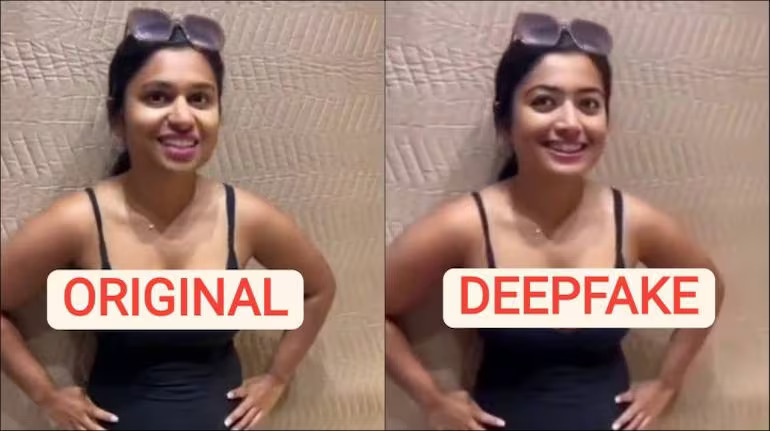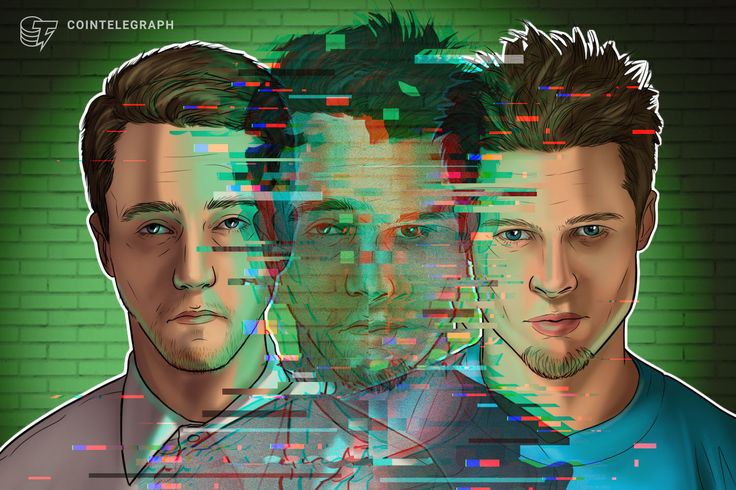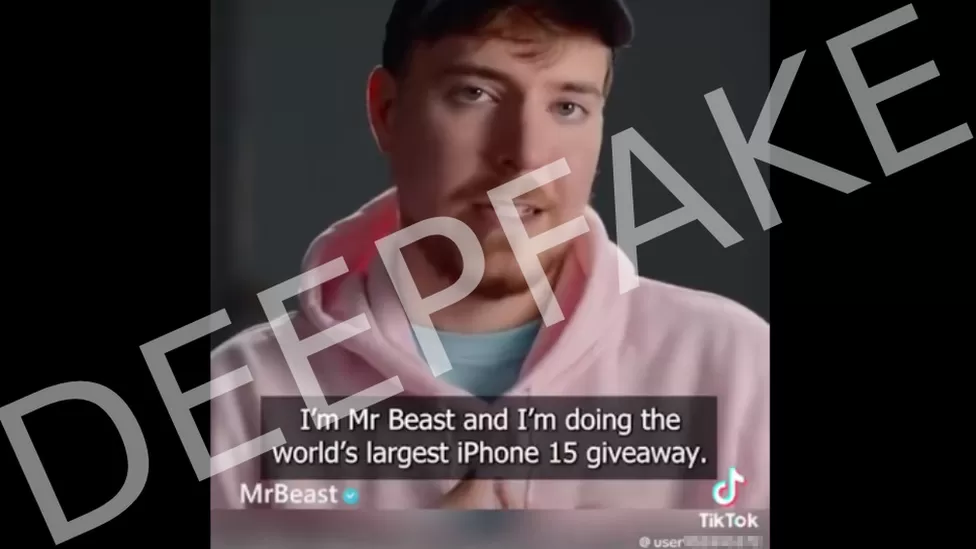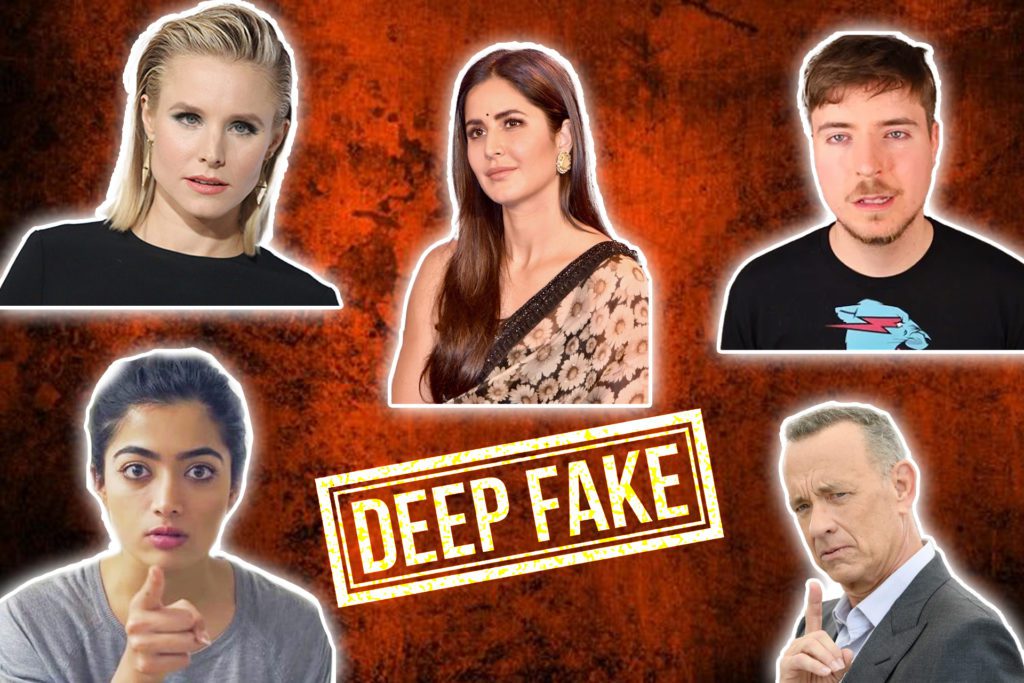The advancement in Science and Technology has bettered the lives of millions as it is deployed in medical science, education or even in our day-to-day lives. However, the flip side of it is the misuse of technology to harm or tarnish the image of fellow individuals. The Rashmika Mandanna Deepfake controversy has brought to light the risks and consequences associated with modern technology, which allows for the creation of highly realistic but fraudulent content by manipulating images, videos, and audio recordings. Today, we will discuss at length what Deepfake technology is and the legal course of action one can look for if one finds themselves in such a situation.

What Is Deepfake Technology?
Deepfake technology is a synthetic media creation technique that uses artificial intelligence (AI) and machine learning algorithms to replace one person’s likeness with another’s in photos, videos, or audio recordings. These manipulations are highly realistic, making it difficult to distinguish between the fabricated content and genuine recordings. Deepfake technology is accessible to the general public, often via readily available software and apps, which has raised concerns about its misuse.

Rashmika Mandanna and Zara Patel
Rashmika Mandanna, the popular Bollywood actor, expressed her deep concern and distress about the viral deepfake video that was circulating on social media. In a statement posted on X (formerly Twitter), she mentioned that the spread of the Deepfake video is not only alarming for her but also for everyone vulnerable to harm due to the misuse of technology.
I feel really hurt to share this and have to talk about the deepfake video of me being spread online.
— Rashmika Mandanna (@iamRashmika) November 6, 2023
Something like this is honestly, extremely scary not only for me, but also for each one of us who today is vulnerable to so much harm because of how technology is being misused.…
Creator Zara Patel, the woman in the original clip, also came forward to share her perspective on the incident. In an Instagram statement, she urged social media users to exercise caution and verify information emphasising the importance of scrutinising digital content for authenticity.
Also Read: Netflix’s Daily Dose of Sunshine Is A Must-Watch For These Reasons
Other Celebrities Affected by Deepfake
Tom Hanks
The renowned Hollywood actor, Tom Hanks, recently cautioned his followers about an AI-generated video promoting a dental plan featuring him. Hanks disassociated himself from the video and highlighted the unauthorised use of his image. This incident underscores the potential for deepfake technology to be used for deceptive purposes, even in commercial contexts.
Mr. Beast
Jimmy Donaldson, popularly known as Mr. Beast, faced misleading AI-driven advertisements that featured a fake video promising viewers $2 iPhones. The deceptive content exemplifies how deepfake technology can be employed for fraudulent schemes and scams, misleading the public.

Kristen Bell
Kristen Bell, known for her voice role as Anna in Disney’s ‘Frozen,’ was distressed to discover that her image had been manipulated and used in explicit content on the internet. Her husband, Dax Shepard, brought this disturbing revelation to her attention, highlighting the invasive and harmful aspects of deepfake technology.
Katrina Kaif
Shortly after Rashmika Mandanna’s video, Actress Katrina Kaif found herself in a similar situation when an AI-generated Deepfake image from the ‘Tiger 3’ movie’s towel fight scene surfaced on social media, altering her outfit and making it appear indecent. Thankfully, the fake image was removed from social media within hours.
Indian Laws and Regulations Addressing Deepfake Technology
In response to the growing prevalence of deepfake content and its potential for misuse, the Ministry of Electronics and IT (MeitY) in India has taken regulatory action. MeitY issued advisories to social media platforms, including Facebook, Instagram, and YouTube, directing them to remove misleading deepfake content generated through artificial intelligence within 24 hours. The advisories reinforce existing legal provisions that platforms must adhere to as online intermediaries.
These legal provisions include Section 66D of the Information Technology Act, which prescribes penalties for cheating by personation through the use of computer resources. Additionally, Rule 3(2)(b) of the Information Technology Rules mandates the removal of content resembling impersonation, including artificially morphed images, within 24 hours upon receipt of a complaint. In the latest move, the Ministry has announced that if anybody is found guilty, they may face imprisonment for upto 3 years and a fine upto one lakh rupees.

The Rashmika Mandanna deepfake controversy, along with the experiences of other celebrities, underscores the urgent need for regulatory measures to address the misuse of Deepfake technology. It highlights the importance of protecting individuals from the potentially damaging consequences of manipulated digital content and misinformation.


